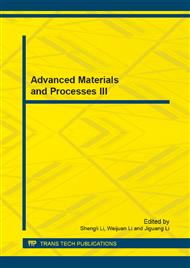p.641
p.646
p.650
p.654
p.658
p.662
p.667
p.672
p.678
Mechanical States of Repaired Full-Thickness Defects of Articular Cartilage by Tissue Engineering under Compression
Abstract:
It is difficult to repair the damage cartilage by itself when cartilage is injured. Cartilage tissue engineering is an ideal treatment method to repair cartilage defects, but at present, the repair has some uncertain effects which is caused by the mechanical states of the repaired region. Under the compression, mechanical behaviors of the repaired full-thickness defect were analyzed by means of the digital correlation technology. Experiments show that in the direction of vertical cartilage surface, the maximum compressive strain of artificial cartilage is 1.7 times higher than the normal host cartilage at 5.1% compression, and it is 1.4 times higher than the normal host cartilage at 25.6% compression. In parallel to the cartilage surface direction, the interface appears compressive strain and the host cartilage near the interface presents a smaller tensile strain. In the aspect of shear strain, direction of shear strain at the junction changes to the opposite direction with the compressive increase.
Info:
Periodical:
Pages:
658-661
Citation:
Online since:
September 2013
Authors:
Price:
Сopyright:
© 2013 Trans Tech Publications Ltd. All Rights Reserved
Share:
Citation:


